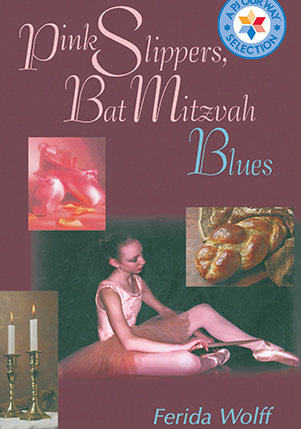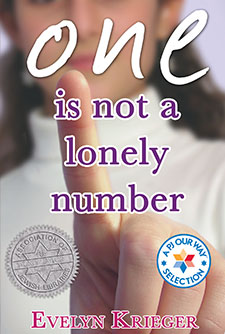Pink Slippers, Bat Mitzvah Blues
Alyssa loves to dance. Every afternoon, you can find her at the studio…until her best friend gets really sick and needs her help. But if Alyssa misses another dance rehearsal, she’ll lose her chance to be a star!
Average Rating
( hint: Login to leave a review! )
119 Reviews
Leave Review
What the Book Is About
Jewish Content & Values
Positive Role Models
Content Advisory
Talk It Over
More for You
What the Book Is About
Alyssa is relieved to be done with her bat mitzvah so she can totally focus on her dancing! But many other pressures in her life compete with her total dedication to her craft. Rabbi Pearlman wants her to join the confirmation class and continue her Jewish education, and her best friend Ellen is very sick and needs her too. As Alyssa steps into her role as a modern Jewish teen, she learns to make her own decisions, integrating the rigorous demands of ballet training with other important values in her life.
Jewish Content & Values
- Bat mitzvah (Jewish girl’s coming-of-age ceremony): Becoming a bat mitzvah is not just about having a party! As Alyssa learns how to choose what matters to her Jewishly, she models this important coming-of-age experience. She also motivates her sick friend Ellen to get better by helping her prepare for her upcoming bat mitzvah.
- Bikur cholim (visiting the sick): It is so important to Alyssa to help Ellen get better that she sneaks into the hospital to see her and continually misses her important dance rehearsals in order to help nurse her back to health.
- Alyssa says the shema and v’ahavtah prayers as part of her bat mitzvah ceremony. The book begins with Alyssa reading her bat mitzvah portion from the Torah (first five books of the Bible) and recites the haftarah (a section of the books of Prophets chanted after individual Torah readings).
- Though at first she laughs at the idea, Alyssa finds Rabbi Pearlman’s confirmation class a place where she can wrestle with moral questions and celebrate Jewish traditions with her peers.
- Alyssa finds some rest under in her synagogue’s sukkah (a temporary structure built for the week-long holiday of Sukkot).
Positive Role Models
- Rabbi Pearlman is a great role model, providing appropriate guidance and direction, without being too aggressive or judgmental.
Content Advisory
None.
Talk It Over
Carla, who is part of Alyssa’s dance class, asks the following question: “Is it frivolous to want to do more than just dance through life?” What do you think? Have you ever had a passion that you loved to do more than anything? How did you balance this passion with the rest of the things that you do in your life?
More for You
What is a Jewish confirmation class?
Alyssa has a bat mitzvah—but she also joins a Jewish confirmation class. Jewish teenage confirmation, with an emphasis on religious education and study, first appeared in Germany in the early nineteenth century, where the Jewish Reform movement was strongly influenced by similar Protestant confirmation ceremonies. In America, in the late nineteenth century, some Reform congregations used confirmation as a way to engage both girls and boys a more egalitarian coming of age ritual. As the practice of bat mitzvah became more common in America, Conservative and Reform congregations added confirmation as a post-bar and bat mitzvah Jewish engagement opportunity.
What the Book Is About
What the Book Is About
Alyssa is relieved to be done with her bat mitzvah so she can totally focus on her dancing! But many other pressures in her life compete with her total dedication to her craft. Rabbi Pearlman wants her to join the confirmation class and continue her Jewish education, and her best friend Ellen is very sick and needs her too. As Alyssa steps into her role as a modern Jewish teen, she learns to make her own decisions, integrating the rigorous demands of ballet training with other important values in her life.
Jewish Content & Values
Jewish Content & Values
- Bat mitzvah (Jewish girl’s coming-of-age ceremony): Becoming a bat mitzvah is not just about having a party! As Alyssa learns how to choose what matters to her Jewishly, she models this important coming-of-age experience. She also motivates her sick friend Ellen to get better by helping her prepare for her upcoming bat mitzvah.
- Bikur cholim (visiting the sick): It is so important to Alyssa to help Ellen get better that she sneaks into the hospital to see her and continually misses her important dance rehearsals in order to help nurse her back to health.
- Alyssa says the shema and v’ahavtah prayers as part of her bat mitzvah ceremony. The book begins with Alyssa reading her bat mitzvah portion from the Torah (first five books of the Bible) and recites the haftarah (a section of the books of Prophets chanted after individual Torah readings).
- Though at first she laughs at the idea, Alyssa finds Rabbi Pearlman’s confirmation class a place where she can wrestle with moral questions and celebrate Jewish traditions with her peers.
- Alyssa finds some rest under in her synagogue’s sukkah (a temporary structure built for the week-long holiday of Sukkot).
Positive Role Models
Positive Role Models
- Rabbi Pearlman is a great role model, providing appropriate guidance and direction, without being too aggressive or judgmental.
Content Advisory
Content Advisory
None.
Talk It Over
Talk It Over
Carla, who is part of Alyssa’s dance class, asks the following question: “Is it frivolous to want to do more than just dance through life?” What do you think? Have you ever had a passion that you loved to do more than anything? How did you balance this passion with the rest of the things that you do in your life?
More for You
More for You
What is a Jewish confirmation class?
Alyssa has a bat mitzvah—but she also joins a Jewish confirmation class. Jewish teenage confirmation, with an emphasis on religious education and study, first appeared in Germany in the early nineteenth century, where the Jewish Reform movement was strongly influenced by similar Protestant confirmation ceremonies. In America, in the late nineteenth century, some Reform congregations used confirmation as a way to engage both girls and boys a more egalitarian coming of age ritual. As the practice of bat mitzvah became more common in America, Conservative and Reform congregations added confirmation as a post-bar and bat mitzvah Jewish engagement opportunity.



